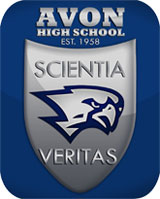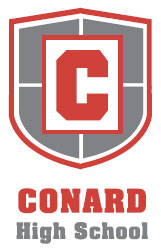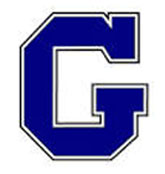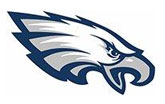Sports Medicine
Our mission is to serve patients and athletes at all levels who face sports-related injuries. As the regional leaders in the diagnosis and treatment of sports injuries and illness, we aim to proactively help you stay safe and manage all aspects of your care so that you can return to an active lifestyle. The sports medicine physicians at Orthopedic Associates have extensive training and experience in the operative and non-operative management of sports-related injuries to help patients avoid injury and resume activities as quickly and safely as possible.
Our fellowship-trained sports medicine orthopedic specialists:
- Provide comprehensive evaluation and medical care to professional athletes, student athletes, and those who are sidelined with sports-related injuries.
- Use the most advanced motion sensing technology to prevent injuries before they happen.
- Educate orthopedic surgery residents and other physicians in the community on the operative and non-operative aspects of sports medicine, ensuring continual improvement in patient outcomes and satisfaction.
- Consult with numerous local high school, collegiate, and professional sports teams on injury prevention and treatment.
- Provide pre-season athletic orthopedic evaluations to assess your readiness to participate in sports at any level, including amateur, high school, collegiate, and professional sports.
- Partner with our in-house physical therapy team, which develops protocols based on the best, most current evidence for rehabilitation of your injury. We coordinate with our therapists to ensure you receive necessary therapy so you can resume activities.
- Provide medical coverage for key sporting events throughout the state.
- Provide follow-up care for sports-related injuries treated at our urgent care centers.
Knee Injuries
Your knee joint is made up of the femur (thigh bone), patella (knee cap), and the tibia and fibula (shin bones). Ligaments hold the bones together, and muscles and tendons help the knee joint move. When any of these structures is hurt or diseased, you have knee problems. Knee problems can cause pain and difficulty walking.
Today’s active lifestyle can put tremendous strain on the knees. Athletes may suffer knee injuries from a sudden blow or fall, or simply by twisting. Women are particularly prone to knee cap problems, while older adults may have trouble from aging joints. Many knee problems arise from damage to the soft tissues (the cartilage and ligaments) inside the joint. Until recently, these could not always be easily diagnosed.
No matter what causes your knee problem, the knee specialists at Orthopedic Associates of Hartford can help. We utilize the latest technology and treatment options, with immediate access to advanced imaging reserved exclusively for our patients. We have expertise in advanced arthroscopy and ligament reconstruction, as well as partial and total knee replacement using robotic assisted technology.
Shoulder Injuries
Your shoulder joint is made up of three bones: the clavicle (collarbone), the scapula (shoulder blade), and the humerus (arm bone). Your shoulders are the most mobile joints in your body. Ligaments, muscles, and tendons stabilize the shoulder joint. Shoulder pain can result from injury or overuse of any of these structures, and may also be due to arthritis.
The shoulder specialists at Orthopedic Associates of Hartford have specific training in the diagnosis and treatment of shoulder problems such as tendonitis, rotator cuff tears, dislocations, fractures, frozen shoulder, and arthritis, as well as other less common shoulder disorders.
Common Conditions
We have treated thousands of injuries since 1970. Some of the most common sports injuries we see include:
Achilles tendonitis or rupture of the Achilles tendon: Injuries which involve the large band of tissue that connects the calf muscles to the heel.
Arthritis: A common disease that affects the bones, and occurs when the cartilage of a joint surface is injured. Arthritis can cause pain, swelling, and loss of motion.
Arthritis of the Knee: The cartilage in the knee can gradually wear away, causing pain and swelling. Although there are many types of arthritis, most knee pain is caused by one of three types: osteoarthritis, rheumatoid arthritis, and post-traumatic arthritis.
- Osteoarthritis: This is an age-related “wear and tear” type of arthritis. It usually occurs in people 50 years of age and older, but may occur in younger people, too. The cartilage that cushions the bones of the knee softens and wears away. The bones then rub against one another, causing knee pain and stiffness.
- Rheumatoid arthritis: This is a disease in which the synovial membrane that surrounds the joint becomes inflamed and thickened. This chronic inflammation can damage the cartilage and eventually cause cartilage loss, pain, and stiffness. Rheumatoid arthritis is the most common form of a group of disorders termed “inflammatory arthritis.”
- Post-traumatic arthritis: This can follow a serious knee injury. Fractures of the bones surrounding the knee or tears of the knee ligaments may damage the articular cartilage over time, causing knee pain and limiting knee function.
Bursitis: Inflammation of a bursa. A bursa is a fluid-filled sac that is found where tendons pass by bony surfaces. Bursitis in the shoulder commonly causes pain on the side or front of the arm, and is worse with activities that place the hand at or above shoulder level.
Joint Dislocation: Occurs when one of the two bones that make up a joint separate from the other bone.
Fractures: Bones, or broken bones.
Frozen Shoulder: A condition that causes painful loss of motion in the shoulder. It often occurs without any known cause of injury or, occasionally, after minor trauma.
Ligament Tear/Sprain: The knee is the largest joint in your body and one of the most complex. It is also vital to movement. Your knee ligaments connect your thighbone to your lower leg bones. Knee ligament sprains or tears are common sports injuries. Tears and injuries to the knee ligaments include:
- ACL injuries: The anterior cruciate ligament (ACL) is one of the most commonly injured ligaments of the knee. The incidence of ACL injury is higher in people who participate in high-risk sports, such as basketball, football, skiing, and soccer. Learn more about Anterior Cruciate Ligament (ACL) Tears
- PCL injuries: The posterior cruciate ligament is located in the back of the knee. It is one of several ligaments that connect the femur (thigh bone) to the tibia (shin bone). The posterior cruciate ligament keeps the tibia from moving backwards too far. An injury to the posterior cruciate ligament requires a powerful force – for example, a bent knee hitting a dashboard in a car accident or a football player falling on a knee that is bent. Learn more about PCL injury (posterior cruciate ligament)
- MCL injuries: An MCL injury is a sprain or tear to the medial collateral ligament. The MCL is a band of tissue on the inside of your knee. It connects your thighbone to the bone of your lower leg. The MCL keeps the knee from bending inward. Learn more about MCL Injuries
Meniscus/Cartilage Tear: The meniscus is a C-shaped cushion of cartilage in the knee joint that keeps your knee steady by balancing weight across the knee. A meniscus tear is a common injury that can be caused by twisting or turning quickly, lifting something heavy, or playing sports. It will often cause pain with pivoting and squatting, and may give a feeling as though something is catching in the knee. Treatment of meniscus tear can be nonoperative, or occasionally may require surgical repair or trimming of the damaged meniscus tissue. Without the meniscus cushion, persistent knee pain and arthritis can develop. Learn more about Torn cartilage
Shin splints: Pain along the outside front of the lower leg, commonly seen in runners.
Sprains and Strains: Tears to the ligaments or muscles caused by being stretched beyond capacity. Ligaments join the ends of bones together and are commonly affected in the ankles, knees, wrists and shoulders.
Tendonitis: Inflammation or pain along a tendon. Tendons are the structures that connect your muscles to your bones. Tendons in the shoulder that can experience tendonitis are the rotator cuff tendons and upper part of the biceps muscle.
Torn Rotator Cuff: are a group of four muscles that cover the top part of the arm bone (humerus) and help stabilize and move the arm. These muscles have tendons that can tear and cause shoulder pain and/or weakness.
Miscellaneous Knee Conditions: There are a variety of other knee conditions that can cause knee pain and can be the result of an active lifestyle, repetitive motion, overuse, or aging. Click here to learn about other common knee conditions including:
Symptoms
Symptoms associated with sports-related injury vary in intensity from mild to severe. Some symptoms may develop over time and get worse with vigorous exercise. Other symptoms may have a sudden onset with an injury. Any sport related injury should be addressed to determine the optimal treatment plan. Symptoms may include:
- Broken skin with visible bone showing
- Constant pain whether moving or not
- Extreme pain and back spasms resulting from continued exercise
- Limited or complete loss of movement
- Loss of sensation or tingling
- Lower back pain that appears with twisting and lifting
- Pain around the front of the shin that starts when the heel strikes the ground
- Pain on inner part of the shins and is worse when standing on toes
- Pain, swelling, inflammation, and tenderness around an injury
- Pain when flexing the wrist backward or forward
- Pain when squeezing the Achilles tendon; may be worse in the morning and improve with walking
- Severe pain that is worse with movement
Knee Injury Specific Symptoms
Signs and symptoms that sometimes accompany knee pain include:
- Acute pain resulting from sports injury, accident, or fall
- Feeling of catching or locking (inability to fully straighten the knee)
- Inability to fully straighten the knee
- Instability; the feeling that your knee is giving way
- Swelling and stiffness
- Redness and warmth to the touch
- Pain on the inside of the knee
- Pain on the outside of the knee
- Popping or crunching noises
- Swelling over the site of an injury
- Weakness
Shoulder Injury Specific Symptoms
Symptoms associated with shoulder pain depend on the cause and may include:
- Discomfort when performing overhead activities
- Dull, aching shoulder pain
- Feeling that the shoulder could pop out of the socket
- Pain and weakness with shoulder use
- Problems sleeping at night due to shoulder pain
- Problems with activities of daily living that are encountered due to lack of shoulder strength
- Stiffness in the shoulder
Symptoms vary in intensity from mild to severe.
How We Diagnose
Medical History and Examination
During your visit, our sport medicine experts will talk to you about your symptoms and medical history. During the physical examination, your doctor will perform a comprehensive exam to assess the extent of the injury or source of pain.
Depending on the type of injury or condition, your doctor may perform additional tests to determine the source of the issue and develop the optimal treatment plan. These tests to confirm your diagnosis may include:
X-ray
These images help to determine and show whether the injury is associated with a broken bone.
Other Tests
Other tests, such as a magnetic resonance imaging (MRI) scan can help us to attain better images of soft tissues like the collateral ligaments. Orthopedic Associates of Hartford has immediate access to an MRI scanner which is reserved for use only by our patients. This helps establish your diagnosis quickly. We may also order blood tests to assist in the diagnosis of inflammatory arthritis.
Depending on the type of injury or condition, your doctor may perform additional tests to determine the source of the issue and develop the optimal treatment plan.
Treatment Options
There are a number of non-surgical and surgical options to treat sports injuries.
Non-Surgical Options
Using the RICE principle (rest, ice, compression, and elevation) may help during the initial days post injury to reduce swelling and pain. Your physician may recommend conservative treatment for pain that may include physical therapy, anti-inflammatory medications, bracing, orthotics to improve foot stability, slings for shoulder injuries and steroid injections. Our sports medicine physicians may suggest changes to technique and equipment to prevent injury, as well as stretches to help athletes warm up and cool down to improve injury resistance.
Surgical Options
If nonsurgical treatment fails to provide relief, surgery is usually discussed. There are many surgical options and our team is skilled at the most advanced surgical techniques to inspect, diagnose, and repair injuries. The chosen course of surgical treatment should be one that has a reasonable chance of providing long-term pain relief so you can resume competitive or recreational activities.
Knee Surgery Specific Options
Arthroscopy: Arthroscopy is a surgical procedure that allows a physician to treat a damaged or problem knee without making a large incision on the outer skin, which protects the knee joint. Fiber optic technology has led to the creation of the arthroscope, an instrument that allows our team to look directly into the knee and diagnose most problems. Learn more about Arthroscopy (The Problem Knee).
Cartilage Transplant: Up until recent years, the treatment of articular cartilage defects has been remarkably poor. The most that could be done was to shave it down with mechanical instruments in an attempt to smooth it, but very little could be done to replace the defect in the smooth surface. Now, there are new options for achieving success. Learn more about Cartilage Transplant
Total or Partial Knee Replacement: If nonsurgical treatments like medications and using walking supports are no longer helpful, you may want to consider total or partial knee replacement surgery. Joint replacement surgery is a safe and effective procedure to relieve pain, correct leg deformity, and help you resume normal activities. Learn more about Knee Replacement and When Surgery is Recommended
ACL Reconstruction: Anterior cruciate ligament reconstruction (ACL reconstruction) is a surgical tissue graft replacement of the anterior cruciate ligament, located in the knee, to restore its function after an injury. The torn ligament is removed from the knee before the graft is inserted in an arthroscopic procedure. Learn more about Anterior Cruciate Ligament (ACL) Tears
Patient Education
We are pleased to provide a wide range of videos and informative handouts to help you understand different sports injuries, repairs, what to expect post-surgery, and when you can return to play. We also demonstrate common physical therapy exercises that can help you on the path to recovery.
View Sports Medicine Resources
3D animated videos of the Knee
Diagnostic Knee Arthroscopy
High Tibial Osteotomy
Loose Body Removal
MPFL Reconstruction
Meniscus Problems – Meniscus Transplant
Meniscus Problems – Torn Meniscus Repair
Meniscus Problems – Torn Meniscus Trimming
Partial Knee Replacement Benefits
Partial Knee Replacement Video
Patella (Knee Cap) Pain – Drilling/Microfracture
Patella (Knee Cap) Pain – Patella Realignment
Patella (Knee Cap) Pain – Removal of Damaged Cartilage
Patella (Knee Cap) Pain – Removal of Painful Plica
Revision Knee Replacement
Synovial Problems – Removal Of Painful Plica
Synovial Problems – Removal of Inflamed Synovium
Torn ACL – Allograft Graft
Torn ACL – Anatomic Footprint ACL Reconstruction
Torn ACL – Bone-Patellar Tendon-Bone Graft
Torn ACL – Hamstring Graft
Torn ACL – Quadriceps Tendon Graft
Total Knee Replacement
3D animated videos of the Shoulder
Bankart Repair
Capsular Shift
Diagnostic Arthroscopy
Distal Clavicle Resection
Partially Torn Rotator Cuff
Fully Torn Rotator Cuff
Loose Body Removal
Repair of Detached Labrum
SLAP Lesion Repair
Subacromial Decompression
Synovial Problems
Total Shoulder Replacement
Trimming of Torn Labrum
3D animated videos of the Shoulder
Bankart Repair
Capsular Shift
Diagnostic Arthroscopy
Distal Clavicle Resection
Partially Torn Rotator Cuff
Fully Torn Rotator Cuff
Loose Body Removal
Repair of Detached Labrum
SLAP Lesion Repair
Subacromial Decompression
Synovial Problems
Total Shoulder Replacement
Trimming of Torn Labrum
Additional Shoulder Injury Resources
What are the most common causes of shoulder pain?
Shoulder impingement and tendonitis
Shoulder instability causes, and treatment options
Acromioclavicular joint injuries
Dr. Clifford Rios on the Evaluation and treatment of the unstable shoulder
Physical Therapy Exercises
We are committed to helping people stay active and as pain-free as possible. Our physical therapists, in collaboration with our physicians, have put together information to guide you on exercises to alleviate pain, strengthen core areas, and keep you active. It is important to discuss your exercise plan with your provider before initiating any exercises.
Sports Medicine Program for Women
We are pleased to now offers a sports medicine program geared specifically towards active women. Learn about our comprehensive approach that involves a multidisciplinary team that helps women remain strong and manage sports-related injuries or problems.
The Patellofemoral Foundation Support
Orthopedic Associates of Hartford is proud to support The Patellofemoral Foundation, whose mission is to improve the care of individuals with anterior knee problems through targeted education and research. Click here to learn more about this foundation and the valuable work they do to help the suffering of those affected with knee issues.
Partnering With Schools & Teams
Our sports medicine physicians have provided and/or continue to provide coverage for many CT sports teams including:
- Central Connecticut State University
- Trinity College
- Conard High School
- Hall High School
- Avon High School
- Cromwell High School
- Newington High School
- Kingswood Oxford High School
- Glastonbury High School
- P&G USA Gymnastics Tour of Champions
- ESPN Summer and Winter X-Games
- PGA Greater Hartford Ope
- Central Connecticut State University
- Trinity College
- Conard High School
- Hall High School
- Avon High School
- Cromwell High School
- Newington High School
- Kingswood Oxford High School
- Glastonbury High School
- P&G USA Gymnastics Tour of Champions
- ESPN Summer and Winter X-Games
- PGA Greater Hartford Open







